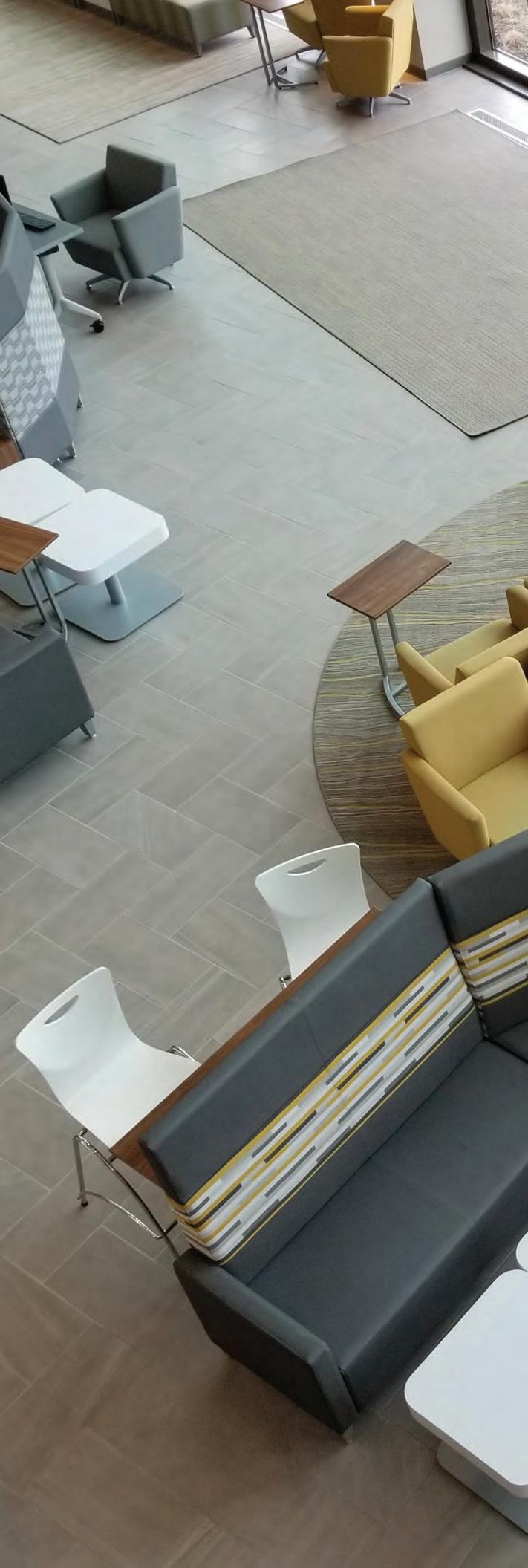
3 minute read
A4LE Europe Action Research Team Update
Innovative Learning Environments and Student Experience (ILE+SE) Scoping Study
With the first phase of the project concluded and a White Paper due to be published in the New Year, the international teams working on the ILE+SE Scoping Study met in Copenhagen and Melbourne to review and plan the next stages. A4LE Europe’s Action Research Team, Alastair Blyth and Terry White, were there and spoke to Wes Imms, Associate Professor of Education at the University of Melbourne and Dr Julia Morris, from Edith Cowan University, about the project’s aims to establish priorities for future research. Involving 21 teams across the globe made up of academics, educators and industry experts, and a separate panel of about 40 independent experts, the ILE+SE scoping study included a series of workshops and surveys held over 18 months and came up with 20 research gaps and three priority areas. The research identified themes around evaluation, learning outcomes, health and well-being and inclusion.
“From this scoping study we can show that 250 people who are experts in their field and coming from different geographies actually share a lot of commonality in terms of what the gaps are. Across all the different sectors people are saying the same things,” said Dr Julia Morris, co-lead of the ILE+TC study.
“The biggest gap is research on student experience,” said Wes Imms, who is concerned that so little is known about the drivers for how students use learning spaces. “Until we understand that, we are just designing on assumptions,” observed Wes, adding that there needs to be a more mature discourse on the provision of learning environments. “We need to stop apologising for the ‘fact’ that we don’t have data - we do; we just need to get more and better data.”
“And what’s also missing is the data that actually, once and for all, justifies expenditure on these spaces,” said Julia.
The scoping study deliberately engaged with a broad range of participants. “In education, we have for too long thought that education needs can only be addressed by educators, which is blatantly untrue,” said Wes. Morris and Imms believe that all stakeholders involved in creating innovative environments, such as educators, architects, policymakers and manufacturers, have knowledge that helps to build a picture of what is needed to improve students’ learning.
While hundreds of different research projects were identified in the scoping study, the vast majority are rarely cited, which suggests current research lacks impact and is not being accessed or read. “Although there is research that addresses some of those 20 gaps we identified in the study, the fact that it’s not widely known about suggests that there’s still more work to get that to maturity,” said Julia.
On the back of this scoping study, the research team is now putting together an international research project to look at student experience. “We are talking about a research agenda for the next decade,” said Wes.
This new project would be the most comprehensive international innovative learning environment research yet undertaken and it would gather high-quality evidence on student experience fostering a number of geographically relevant deep studies into local issues.
Design Technology challenge demonstrates importance of student voice in learning space design

The Planning Learning Spaces In Practice (PLSiP) team has been working with Dollis Primary School, London, as they redesign some of their learning spaces. Student voice is playing a vital role in stakeholder engagement. By delivering workshops at the school, and working closely with staff, students and the wider school community the PLSiP team ensures that the voices of all stakeholders are heard.
“When designing learning spaces, it is often external stakeholders who create the overall floorplan, with very little consultation with teachers and students themselves,” explains Bhavini Pandya, who leads the PLSiP team. “By ensuring all stakeholders contribute to the process, the design of the places and spaces in which students learn are more purposeful, meaningful and authentic.”
As part of the design consultation process, Dollis’s DT Leader set a design technology challenge for all students from Early Years to Year 6. The students were asked to consider what makes an effective learning space, what the interior space should be like and what they felt they needed to become resilient, independent and motivated learners.

Discussions with the students clearly demonstrated that they wanted areas in which to work in groups, places to work independently, engaging reading areas and places to retreat to when they needed some “quiet time”.
“I need a quiet space to go into when I get stressed, but I should be able to still see and hear my teacher,” were the thoughts of one Year 5 student, clearly articulating the idea of staying within the room but having a more dedicated quiet space that would allow him to deal with his emotions without feeling excluded.
“We were really inspired by the designs the students created as part of their DT challenge, because they clearly showed which areas within the learning spaces the students felt were most important,” said Bhavini Pandya. “It’s vital that students are included in the design process because they are the ones who are going to use it and they know what they need to learn well.”

Our first consideration should always be to repurpose existing spaces before considering building new.










